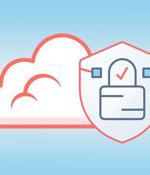Security News

"We are no longer dealing with just vulnerabilities, but also with vulnerable flows between microservices. On top of that, as cloud-native applications are built on multiple infrastructure layers - the container, the cluster, and the cloud - they way these layers are configured affects what a hacker can do with these vulnerabilities," notes Ron Vider, one of the co-founders and the CTO of Oxeye. "Old-school" software composition analysis and static, dynamic, and interactive application security testing tools are run independently, are not synchronized with one another, and are unable to cross-reference and use enriched data from other code layers in the environment.

Microsoft Defender's tentacles have spread to include the Google Cloud Platform and beefed up visibility with a public preview of CloudKnox Permissions. The addition of GCP was a while coming after Microsoft confirmed the arrival of Defender for Cloud on Amazon Web Services at its Ignite event in November.

Microsoft announced today that Microsoft Defender for Cloud now also comes with native protection for Google Cloud Platform environments, providing security recommendations and threat detection across clouds. Defender for Cloud is a security solution that monitors cloud services for threats, makes recommendations to harden security posture, and detects and warns of vulnerabilities in protected multi-cloud and hybrid environments.

CloudBolt Software released its latest research report, examining industry sentiment in specific dimensions of hybrid cloud/multi-cloud, and aiming to uncover unmet cloud needs that hinder cloud innovation. These limitations are caused by too many groups across an enterprise using too many different tools and clouds, with 80% struggling to achieve comprehensive visibility into cloud usage and spend.

Financial services leaders cite increased future revenues and improved future profitability as leading reasons to deploy cloud technologies, according to a financial services study by Capco. The report identifies the key trends and opportunities ahead and offer insights to allow financial services institutions to become cloud leaders.

The survey results highlight a strong need to gain better visibility into cloud costs while reducing the burden to the affected DevOps / IT teams that are responsible for those costs. As multi-cloud adoption has accelerated - 71% of organizations leverage more than 3 cloud infrastructure providers - it has become significantly more challenging to track, understand, and properly attribute cloud costs to their appropriate teams.

MariaDB announced key findings from its survey that shows no one's staying behind as businesses move forward with database migration to the cloud. Those surveyed included IT Heads, DBAs and software developers, all of whom had some responsibility for the selection and management of databases-and all said their business' cloud database migration was in place, in progress or planned.

While most major cloud providers do a decent job of keeping data secure, the majority of business users take an upload-it-and-forget-it approach to their data security needs. In reality, cloud providers can only protect a business's data if the business does its part by adhering to some cloud security best practices.

In 2021, securing your network is more challenging than ever - you need to secure users, devices, apps, and data at the point of access, working at the cloud edge to deliver protection and performance. Your choice of cloud security platform and partner is key, as it will serve as a foundation for the way you grow and evolve to meet new challenges - for example, meeting the new standards defined by Gartner as part of their forward-thinking secure access service edge architecture.

Why is a web filtering important and what are the main features necessary for MSPs? Managed service providers have been struggling with finding the right web filtering solutions. Web filtering is necessary for businesses because it prevents the staff from accessing malicious and harmful content while using the corporate network or while working from home, besides offering other advantages like monitoring their performance and keeping it to the maximum to ensure productivity.